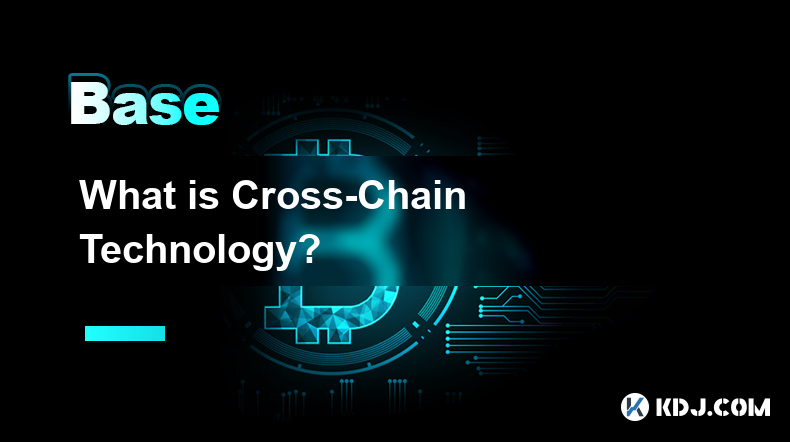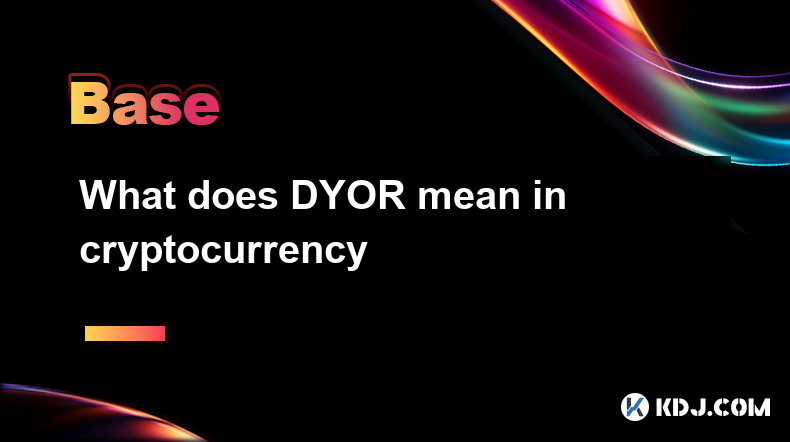-
 Bitcoin
Bitcoin $84,693.2712
0.39% -
 Ethereum
Ethereum $1,579.8022
-1.27% -
 Tether USDt
Tether USDt $0.9999
0.01% -
 XRP
XRP $2.0649
-1.48% -
 BNB
BNB $588.5203
1.08% -
 Solana
Solana $134.1635
0.73% -
 USDC
USDC $0.9999
0.00% -
 TRON
TRON $0.2453
0.14% -
 Dogecoin
Dogecoin $0.1549
-1.29% -
 Cardano
Cardano $0.6150
-0.58% -
 UNUS SED LEO
UNUS SED LEO $9.2293
-2.29% -
 Chainlink
Chainlink $12.6383
0.51% -
 Avalanche
Avalanche $19.0586
-1.12% -
 Toncoin
Toncoin $2.9839
0.77% -
 Stellar
Stellar $0.2416
1.21% -
 Shiba Inu
Shiba Inu $0.0...01186
-1.00% -
 Hedera
Hedera $0.1655
3.96% -
 Sui
Sui $2.1102
0.61% -
 Bitcoin Cash
Bitcoin Cash $328.0841
-2.16% -
 Polkadot
Polkadot $3.6849
2.00% -
 Litecoin
Litecoin $75.3187
0.18% -
 Hyperliquid
Hyperliquid $16.9820
5.30% -
 Dai
Dai $1.0000
-0.02% -
 Bitget Token
Bitget Token $4.3606
0.03% -
 Ethena USDe
Ethena USDe $0.9992
0.00% -
 Pi
Pi $0.6118
-0.11% -
 Monero
Monero $216.1674
-1.30% -
 Uniswap
Uniswap $5.1872
-1.13% -
 OKB
OKB $49.8382
-2.62% -
 Pepe
Pepe $0.0...07092
-2.29%
What is Cross-Chain Technology?
Cross-chain technology fosters interoperability, enabling seamless transfer of assets and data across multiple blockchain networks, expanding their capabilities and reach.
Feb 18, 2025 at 01:19 am

Key Points:
- Cross-chain technology facilitates communication and transfer of assets between multiple blockchain networks.
- It enables interoperability, broadening the capabilities and reach of individual blockchains.
- The technology has significant applications in finance, supply chain management, healthcare, and more.
What is Cross-Chain Technology?
Cross-chain technology is an innovative solution that bridges the gaps between separate blockchain networks, paving the way for seamless interaction and data exchange. It addresses the limitation of individual blockchains operating in isolation, where assets and information remain confined within their respective ecosystems.
Benefits of Cross-Chain Technology:
- Interoperability: Cross-chain technology fosters interoperability, allowing different blockchains to communicate with each other. This opens up a world of possibilities, as applications and assets can easily traverse various networks.
- Increased Accessibility: By connecting different blockchain networks, cross-chain technology expands the accessibility and reach of each individual blockchain. Assets and data can be transferred across borders seamlessly, breaking down geographical barriers.
- Enhanced Security: Integrating different blockchain networks through cross-chain technology strengthens the overall security of the ecosystem. The decentralized and distributed nature of multiple blockchains provides robust protection against malicious attacks.
- Broader Use Cases: Cross-chain technology unlocks the potential for a wider range of applications. It allows for the creation of decentralized financial systems, cross-border payments, and interoperable supply chain management solutions.
How Cross-Chain Technology Works:
The operation of cross-chain technology involves the following steps:
- Asset Identification: The initiating blockchain identifies the asset (e.g., a cryptocurrency or token) that needs to be transferred to another blockchain.
- Lock-In: Once the asset is identified, it is locked into a smart contract on the initiating blockchain, effectively freezing it in place. This locking mechanism ensures the integrity of the transfer process.
- Cross-Chain Communication: The transaction details are then transferred to the destination blockchain through various methods, such as cross-chain bridges or atomic swaps.
- Asset Creation: Upon receiving the transaction details, the destination blockchain mints a new asset that represents the real asset locked on the initiating blockchain.
- Asset Release: Once the new asset is created, the smart contract on the initiating blockchain releases the original locked asset, completing the transfer process.
Applications of Cross-Chain Technology:
Cross-chain technology finds diverse applications across multiple sectors:
- Finance: Enabling interoperability between different blockchain platforms, cross-chain technology facilitates seamless transfer and exchange of cryptocurrencies and other financial assets.
- Supply Chain Management: By connecting disparate blockchain networks, cross-chain technology allows for transparent and efficient tracking of goods and materials throughout the supply chain process.
- Healthcare: Integrating blockchain networks through cross-chain technology enhances patient data sharing, medical record management, and drug traceability.
- Gaming: Cross-chain technology enables the transfer of in-game assets and characters between different gaming platforms, enhancing the interactivity and user experience.
- Governance: Cross-chain technology can be leveraged to establish decentralized governance systems, facilitating decision-making and participation across multiple blockchains.
FAQs:
Q: What are the different types of cross-chain solutions?
A: Cross-chain solutions vary in their approaches, including federated sidechains, hash-locked time contracts (HTLCs), atomic swaps, and inter-blockchain communication (IBC).
Q: What are the challenges associated with cross-chain technology?
A: Cross-chain technology faces challenges such as security risks (e.g., bridge exploits), scalability limitations, and the need for standardization.
Q: What is the future of cross-chain technology?
A: Cross-chain technology is expected to play a vital role in the evolution of blockchain ecosystems, enabling interoperability, enhancing security, and unlocking new possibilities for decentralized applications.
Disclaimer:info@kdj.com
The information provided is not trading advice. kdj.com does not assume any responsibility for any investments made based on the information provided in this article. Cryptocurrencies are highly volatile and it is highly recommended that you invest with caution after thorough research!
If you believe that the content used on this website infringes your copyright, please contact us immediately (info@kdj.com) and we will delete it promptly.
- Top Performing AI Tokens In Today's Market - Updated List
- 2025-04-18 14:10:13
- As altcoin volatility intensifies and investor trust falters, top analysts warn that the next altcoin season could collapse
- 2025-04-18 14:10:13
- Looking to Buy the Next Big Cryptocurrency? Qubetics, Bitcoin, and Mantra Are Poised to Shape the Future of Digital Finance
- 2025-04-18 14:05:13
- Dogecoin (DOGE) Approaches a Critical Price Point
- 2025-04-18 14:05:13
- Mutuum Finance (MUTM) Quietly Dominates Pre-Sale Metrics Ahead of Launch
- 2025-04-18 14:00:12
- Verdict: Bitcoin Prosystem offers a polished trading environment
- 2025-04-18 14:00:12
Related knowledge

How the Lightning Network improves Bitcoin efficiency
Apr 17,2025 at 08:56pm
The Lightning Network represents a significant advancement in the Bitcoin ecosystem, aiming to address some of the most pressing issues related to transaction speed and cost. By enabling off-chain transactions, the Lightning Network drastically improves Bitcoin's efficiency, allowing for faster and cheaper transactions. This article will explore how the...

Analysis of the KYC process of cryptocurrency exchanges
Apr 17,2025 at 05:07pm
The Know Your Customer (KYC) process is a critical component in the operations of cryptocurrency exchanges. It serves as a regulatory measure to prevent fraud, money laundering, and other illicit activities. KYC procedures are designed to verify the identity of users and ensure compliance with financial regulations. This article delves into the various ...

What does Floor Price mean in the NFT market
Apr 17,2025 at 12:42am
The term Floor Price is a critical concept within the NFT (Non-Fungible Token) market, serving as a key indicator for both buyers and sellers. In essence, the floor price represents the lowest price at which an NFT from a particular collection is currently listed for sale on a marketplace. This price point is crucial for understanding the perceived valu...

How to understand the TVL indicator in DeFi projects
Apr 17,2025 at 03:28pm
Understanding the TVL indicator in DeFi projects is crucial for investors and enthusiasts looking to gauge the health and popularity of decentralized finance platforms. TVL, or Total Value Locked, represents the total amount of assets that are currently staked or locked in a DeFi protocol. This metric serves as a barometer for the trust and interest tha...

What does DYOR mean in cryptocurrency
Apr 17,2025 at 03:00pm
DYOR, or 'Do Your Own Research,' is a crucial mantra in the cryptocurrency community. It emphasizes the importance of individuals conducting their own thorough investigations before making any investment decisions. In the fast-paced and often volatile world of cryptocurrencies, relying solely on others' advice or the hype surrounding a particular coin c...

What is Alpha? How to find Alpha opportunities?
Apr 16,2025 at 12:42pm
What is Alpha?Alpha is a term widely used in the financial world, including the cryptocurrency market, to describe the ability of an investment to outperform a benchmark. In the context of cryptocurrencies, alpha refers to the excess return an investor achieves over the market's average return. For example, if the overall crypto market grows by 10% in a...

How the Lightning Network improves Bitcoin efficiency
Apr 17,2025 at 08:56pm
The Lightning Network represents a significant advancement in the Bitcoin ecosystem, aiming to address some of the most pressing issues related to transaction speed and cost. By enabling off-chain transactions, the Lightning Network drastically improves Bitcoin's efficiency, allowing for faster and cheaper transactions. This article will explore how the...

Analysis of the KYC process of cryptocurrency exchanges
Apr 17,2025 at 05:07pm
The Know Your Customer (KYC) process is a critical component in the operations of cryptocurrency exchanges. It serves as a regulatory measure to prevent fraud, money laundering, and other illicit activities. KYC procedures are designed to verify the identity of users and ensure compliance with financial regulations. This article delves into the various ...

What does Floor Price mean in the NFT market
Apr 17,2025 at 12:42am
The term Floor Price is a critical concept within the NFT (Non-Fungible Token) market, serving as a key indicator for both buyers and sellers. In essence, the floor price represents the lowest price at which an NFT from a particular collection is currently listed for sale on a marketplace. This price point is crucial for understanding the perceived valu...

How to understand the TVL indicator in DeFi projects
Apr 17,2025 at 03:28pm
Understanding the TVL indicator in DeFi projects is crucial for investors and enthusiasts looking to gauge the health and popularity of decentralized finance platforms. TVL, or Total Value Locked, represents the total amount of assets that are currently staked or locked in a DeFi protocol. This metric serves as a barometer for the trust and interest tha...

What does DYOR mean in cryptocurrency
Apr 17,2025 at 03:00pm
DYOR, or 'Do Your Own Research,' is a crucial mantra in the cryptocurrency community. It emphasizes the importance of individuals conducting their own thorough investigations before making any investment decisions. In the fast-paced and often volatile world of cryptocurrencies, relying solely on others' advice or the hype surrounding a particular coin c...

What is Alpha? How to find Alpha opportunities?
Apr 16,2025 at 12:42pm
What is Alpha?Alpha is a term widely used in the financial world, including the cryptocurrency market, to describe the ability of an investment to outperform a benchmark. In the context of cryptocurrencies, alpha refers to the excess return an investor achieves over the market's average return. For example, if the overall crypto market grows by 10% in a...
See all articles
























































































